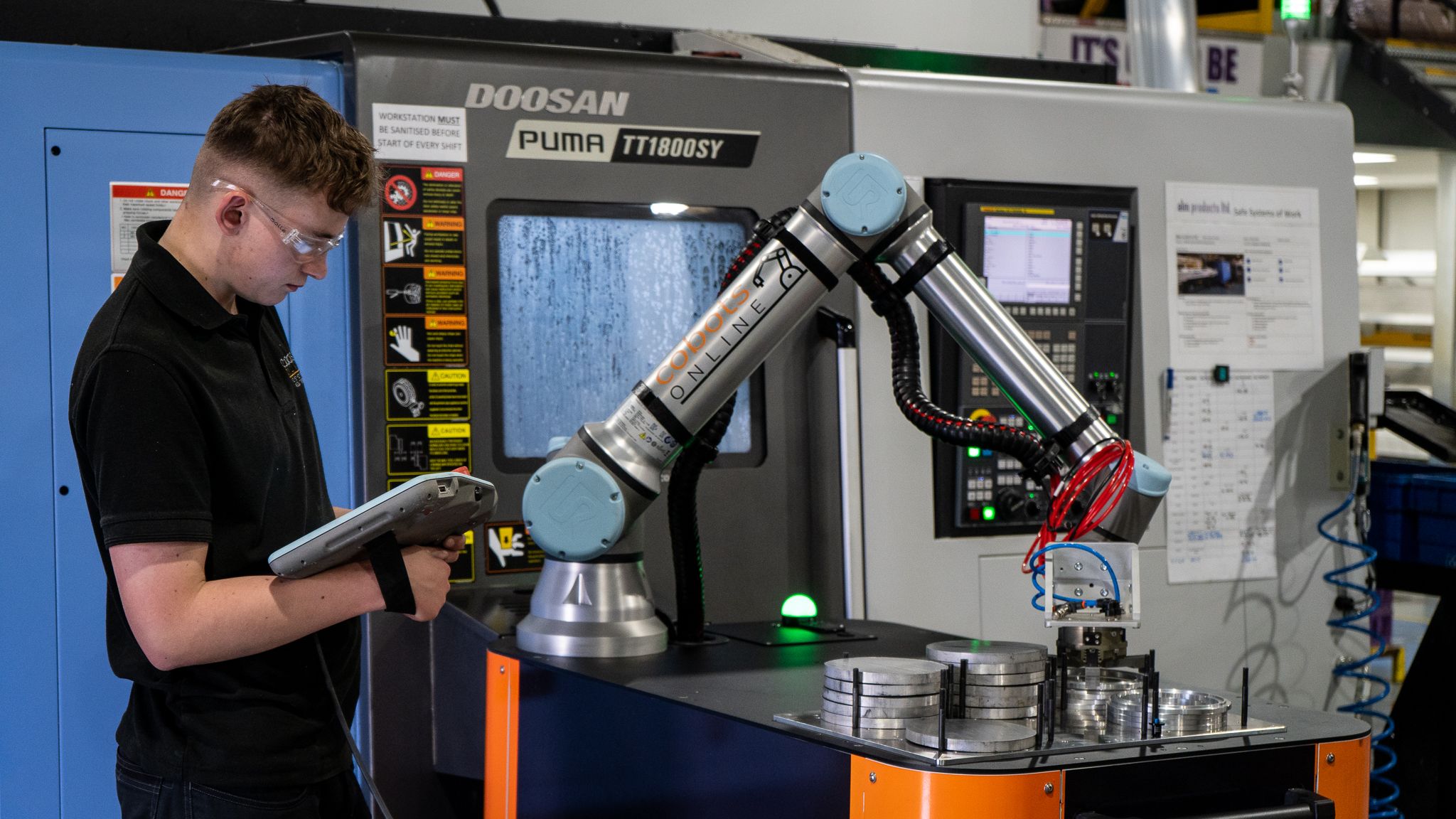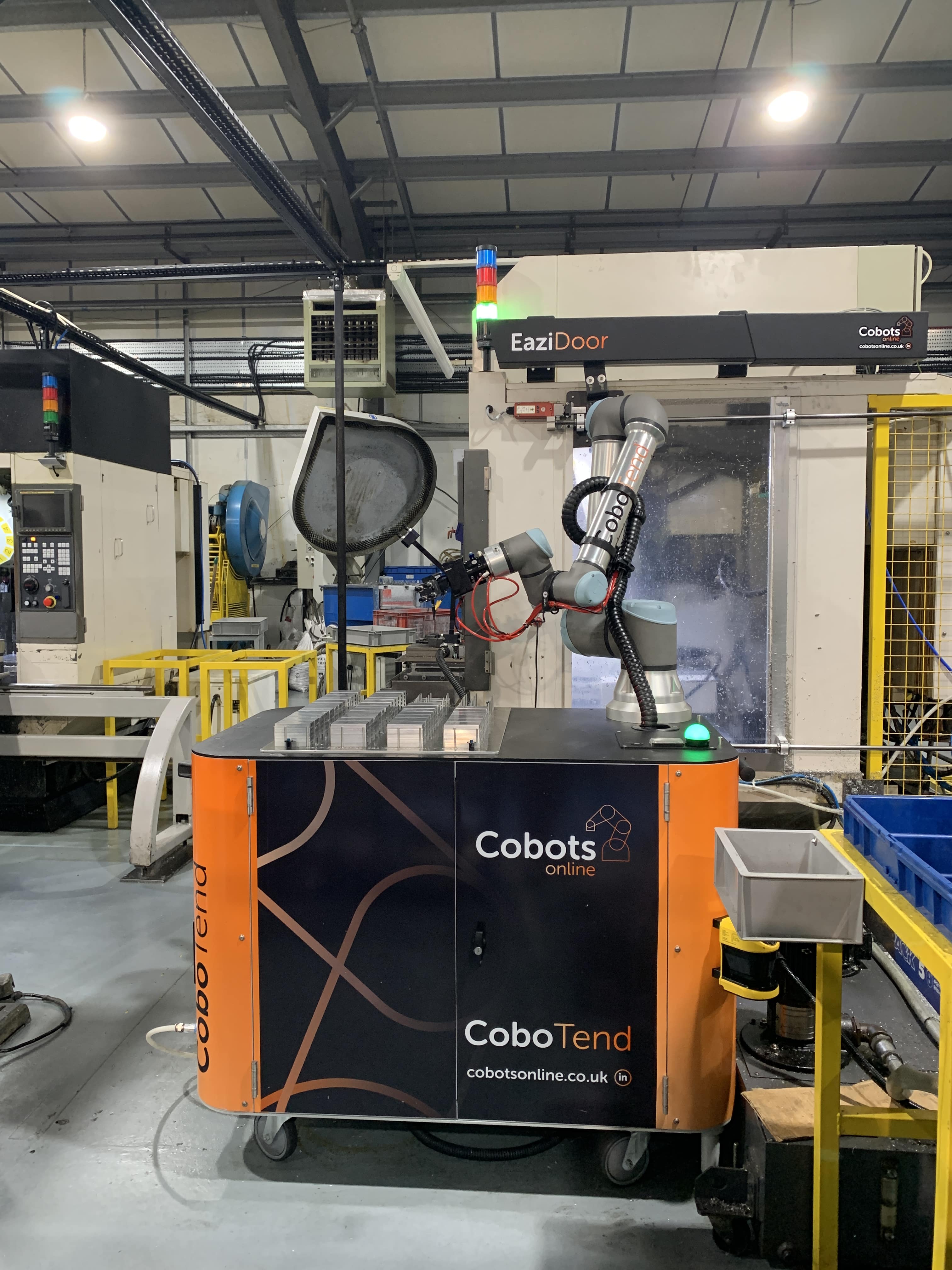Improving Workspace Safety With Cobots
A common picture within manufacturing is large industrial robots fenced off, taking up a large footprint on the factory floor in order to carry out their work. Industrial robots inherently work with such speed and power that they are dangerous for humans to work closely alongside.
Collaborative robots on the other hand are designed to share the workspace with humans. Making automation easier than ever before for businesses of all sizes, cobots provide viable and safe solutions for human-centric manufacturing.
Working in close proximity safely with human operators, cobots offer flexible automation to improve the way humans work and bring greater levels of safety to the factory floor. But what exactly makes cobots a safe co-worker?
Designed with safety in mind
Cobots are smaller, smarter and easier to deploy than their industrial robot counterparts. Specifically designed to work alongside humans, collaborative robots are helping businesses to scale tasks safely, making productions more effective, minimising waste and improving working conditions.
Designed with the intent to work in close proximity to humans, cobots are more compact than conventional robots. They generally have lightweight frames with rounded corners, smooth surfaces and minimised pinch points, all of which aim to help prevent injuries.
Opening up new possibilities within manufacturing, cobots are taking on repetitive, dangerous and physically intensive tasks that require high precision. Thanks to their various safety features, cobots do not need to be enclosed behind fencing, meaning humans are able to carry out further work directly next to them.
While cobots were conceived from demand in manufacturing, these agile co-workers are improving productivity and workplace safety across many other sectors.
One thing that is always important to remember is that cobots automate tasks and processes, not jobs. Cobots should be seen as a supportive co-worker and not a replacement for human workers, who’s knowledge and skills are imperative to the success of implementing automation into manufacturing processes.

Sensing dangers
In order to work safely alongside humans, cobots are equipped with a series of sensors that stops their movement before workers can access or be exposed to any dangers in the collaborative workspace. Only when no human presence is detected will a cobot resume working at full capacity.
Cobots are designed to have force sensors in their joints and configurable limits on power, speed and stopping distances. If the cobot detects a certain level of power or force, it will stop immediately to protect the human operator.
It is critical throughout the lifespan of your cobot to make sure sensors are in good working order and software is up to date and running correctly. As long as risk assessments are conducted properly, a collaborative workspace can be created safely between humans and cobots.
Reducing workplace injuries
Cobots themselves are not only safe, they also increase the safety and health of your employees. Tedious and repetitive tasks are not only boring, but pose an increased risk of injury as workers become fatigued. While a human may slow down or misstep after a long shift, a cobot never falters in its movements thus helping to minimise the risk of occupational injuries.
Tasks such as heavy lifting, repetitive one-sided movements, dusty environments and toxic substances all put unnecessary strain on employees. In 2021, there were an estimated 92,000 work-related illnesses, 40% of which were musculoskeletal disorders, with an additional 40% due to poor mental health. Manufacturing has a rate of occupational asthma that is 5 higher than other industries, with around 4,000 workers annually suffering from breathing or lung problems due to their work. All these factors are leading to extended periods of absence for workers, contributing to the severe labour shortages many industries are experiencing.
Put simply, cobots place humans at the centre of the production process. When cobots take on tasks with a high level of risk, operators undertake more varied work and experience less attrition, which contributes to fewer sick days and minimises injuries.
Adapting to any workplace, cobots provide the perfect solution for dirty and dangerous environments where worker’s health would be severely impacted. This is not only improving safety and the health of your employees, but increasing the appeal of your company to prospective workers.

Never forget a detailed risk assessment
Despite their numerous safety features, appropriate safety measures must still be considered when implementing cobots, particularly when used with EOATs or grippers. To guarantee the success of a cobot and the safety of those working in the vicinity, it is vitally important to undertake a comprehensive risk assessment.
With cobots, safety is very much dependent on the task at hand being performed. Therefore it is important to also ensure that employees are thoroughly instructed on working with a cobot and you continually assess the safety of the working environment around the cobot.
Safety first with CoboTend
One of the main benefits of using cobots, like CoboTend, is the safety it brings to workspaces and machine tending tasks. Without workers having to repetitively load and unload parts directly into machines, the chance of injury is significantly reduced.
If you’re looking to improve worker safety, while also increasing production and revenue, get in touch with the Cobots Online team today. Our knowledgeable team is always on hand to discuss your requirements and help automate your processes.
